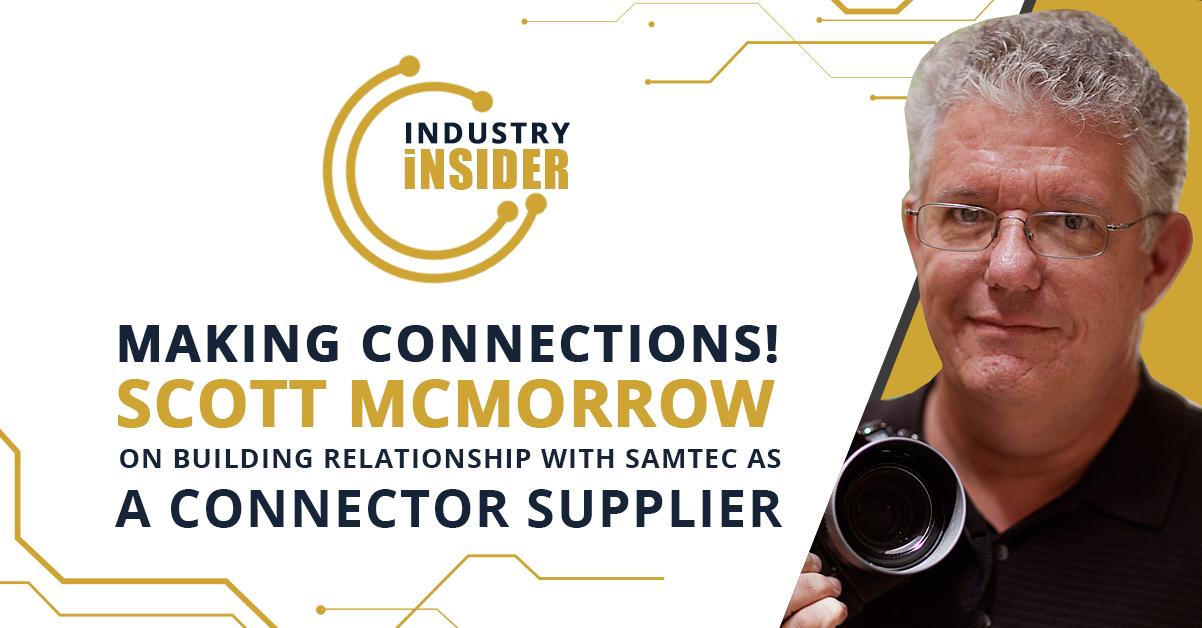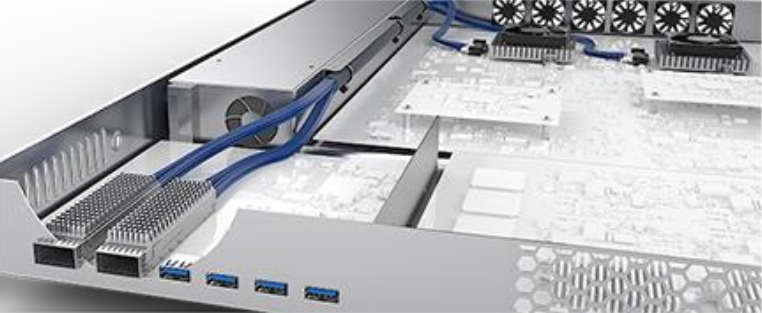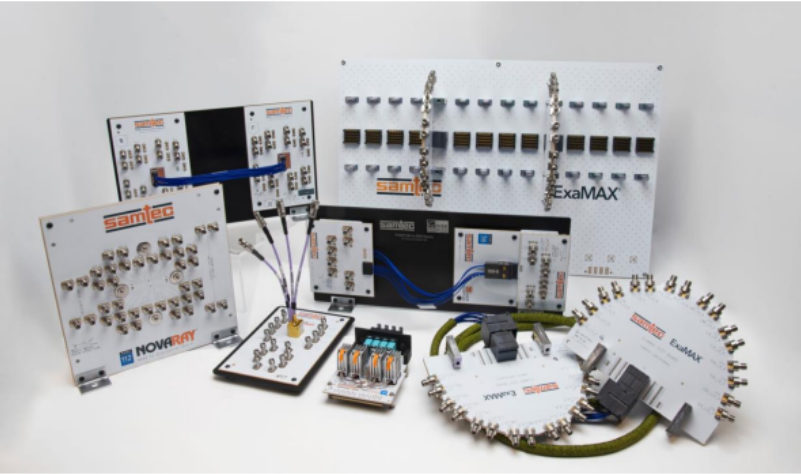Making Connections! Scott McMorrow, on Building Relationship with Samtec as a Connector Supplier

When it comes to providing the widest range of connecting or interconnect technology, there probably isn’t a company that offers a more diverse range of products than Samtec. And when it comes to being at the forefront of the connector industry and technology range, there isn’t anyone more well-versed and knowledgeable than Scott McMorrow, who serves as CTO of Samtec’s signal integrity product group.
This article will address the ways in which product developers can form a relationship with Samtec as a connector supplier, how engineering team experts ensure that developers select the appropriate connector for their particular product and how they help product developers account for all of the design interface requirements between the product and the connector (aka the “final inch”). Also addressed are the current technological challenges and future trends.
About Samtec
Samtec is a privately-held company founded in 1976 and has its headquarters in New Albany, Indiana. It has a broad international reach with over 40 international locations and products sold in over 125 countries. The company has more than 6,000 employees, in excess of 25,000 customers, and its revenues in 2019 were around $760-million. In addition to manufacturing at its headquarters in the U.S., the company has offshore manufacturing facilities in Singapore, Malaysia, China, Taiwan, Vietnam, and Costa Rica. The company’s microelectronic division is based in Colorado Springs, Colorado, while its optical group is based in Santa Clara, California.
About Scott McMorrow
As CTO for Samtec’s Signal Integrity Products Group, Scott oversees and provides guidance for all of the company’s products characterized as being signal or power integrity-related, including high-performance connectors, high-performance interconnectors, and cable systems. He also “dabbles” with the company’s optical group. He is a frequent participant in industry-related technical conferences and has actively participated in and contributed to the development of several connector-related industry standards. Before joining Samtec, Scott was the Founder and President of Teraspeed, a consulting company specializing in high-performance connector systems. In 2014, Teraspeed was acquired by Samtec, and Scott became a full-time employee of the company. Prior to Teraspeed, Scott worked for several different consulting companies. Previously, he was with Lattice Semiconductor. He started his technical career at Martin Marietta’s Denver Aerospace operations.
So Many Products, So Many Customers, So Many Targeted End Applications
Broad and bold are terms that can be used to describe Samtec’s product offerings and customer base. Scott explains, “Our customer base is as diverse as our product offerings. While we have key technology and development partners, we have a broad base of 25,000 customers. Also, we have no one large customer that accounts for the majority of our sales.
“As a result of the foregoing,” he continues, “We have a lot of very small customers with a significant amount of them coming through electronic distributors. We provide wire-wrapped pin connectors and our simple connectors that are still a very large part of our business. One of the reasons that we have manufacturing operations in multiple locations is to be able to serve any market. Samtec is recognized as the service leader in the connector industry.”
With the diversity of its manufacturing operations and distribution sectors, Samtec’s sales are split evenly between the U.S., Asia, and Europe. Scott explains, “With our higher performance, sophisticated products, the early adopters come out of the U.S., but they then quickly proliferate into other markets. It’s not much different than anything [else] in the data comm market.”
The latest generation of Samtec’s high-performance products is targeted toward data communication, computing, AI processing, and even automotive applications. Scott states, “We are targeting our high-performance products into next-generation technology for switches and servers. 5G is also a huge market for us.”
Figure 1 depicts Samtec’s full line of high-speed products.

In addition to the foregoing, Samtec offers a broad line of RF connector products that is rapidly expanding. Scott notes, “We can provide pretty much any RF product. For the 5G infrastructure market, we are providing RF connectors that support 100 GHz. In addition, we are developing a lot of product for the 60-90 GHz clock frequency range.”
Samtec’s Flyover®, which is shown in Figure 2, is the company’s fastest-growing product sector. Scott explains, “The name Flyover is now synonymous with cable systems in the industry’s in-box cable systems. Ours has become the defacto standard because of its performance. We continue to add cables and connectors to this product line. We are looking at explosive growth as soon as some of the supply chain problems resulting from COVID-19 abate.”

In addition, the company’s FireFly™ micro flyover product for mid-board optics is experiencing rapid growth with a number of applications, ranging from emulation systems to massive phased-array antenna systems. Scott explains, “It’s even inside the CERN Large Hadron Collider accelerator that is located outside Geneva, Switzerland. Firefly is finding applications all over the world, and it’s become a fairly broad application space for us.”
In light of the Samtec’s large and varied product offerings and diverse customer base, Scott describes his focus as being split across three directions.
“30% of my time is spent in training our engineering people in our engineering department—teaching them signal integrity, how to use tools, and how to perform the design modeling needed.30% of my time is spent in R&D, identifying new opportunities, and thinking up new design ideas that will result in new product development. In addition, another 30% of my time is spent in customer interfacing and technical marketing, doing interviews, and working with the marketing department to develop new technical messaging.”
Making the Right Connections
Engaging with the Customer
Samtec’s process of customer engagement is very similar to that of other downstream PCB suppliers. Scott explains, “First and foremost it’s about developing a relationship with the product developers and designers. Samtec’s ethos is ‘Sudden Service,’ and that applies to sales, marketing and engineering, manufacturing, quality, shipping, and every department in the company. The concept is that if we have the data and the information, we’ll get a connector system, answer, or solution to you within 24 hours. What’s important right now with high-performance systems is having every piece of information available so that you can make an informed decision. We do this by fully characterizing our connectors and creating characterization boards and systems. We provide these to our customers on loan, or they can purchase them through our sales organization. This information includes the test boards, the test reports, and the measurements we have made so that our customers can replicate our measurements in their labs. Figure 3 is a picture of our SI evaluation and development kits.”

As noted in previous articles, the ability to achieve a working high-performance system can be a complex, detailed process. Scott notes, “What’s really important for high-performance products is to provide the breakout region. This includes how the connector is hooked up to the PCB, where the vias are located, the plane openings, and the location of the antipads. These things are all necessary to achieve the design performance of the connector system.”
“We actually define these regions and provide that information as part of our development kit. We also provide the recommended breakout and recommended layout practices that can be entered into any layout tool, including the one from Altium.”
Scott continues, “The idea is to minimize the risk. The designer should be able to trust their connector vendor to be able to provide all of the information necessary for them to do the design. With Samtec, if you follow our design guides and our rules, your connector will just plain work, and the designer can worry about something else. For our customers, nothing is hidden. Any of our data is available to any customer. We just ask for an NDA.”
Working With the Customer’s Knowledge Base
As with any aspect of the design process, there are varying levels of expertise when it comes to connector systems. Scott states, “There is a range of engineers that are designing with connector systems. Some are very savvy, so all they want is the data and the models, and they will go off and be absolutely capable of finalizing the design themselves and integrating it into their system.”
“At the other end, there are engineers for whom signal integrity is not their primary purpose in life. With some companies, there may only be one or two electrical engineers in the company, but they are still designing sophisticated products. In these instances, we provide all the design collateral, we’ll actually perform an analysis, and we will help to guide them in choosing the right connector solution. “
Scott continues, “We try to service everybody based on where they come from. We don’t expect any particular level of competence, and that is really important. This allows us to service them and also provide them with additional training. We like to train the industry, and we spend a lot of time talking to our customers. Our application engineers and our internal frontline support engineers will work on customer issues. Then, some of our more advanced SI engineers can get involved and help with the training.”
“If a company or an engineer is designing one of our cable connector systems, we provide system collateral and simulation artboards—the things that will help them develop a good feel along with the modeling, so that they can simulate that part or that interconnect in their system. If it has to do with the Samtec portion of the design, such as the connector breakout and the modeling of the connector, all of that information is provided for free.”
As noted above, Scott came into Samtec via his consulting firm, Teraspeed, and maintains Teraspeed consulting to this day. Scott explains, “If a customer requires guidance regarding how they make our connector work in their overall end-to-end system, with multiple boards, their FPGA, their switch chip or their processor, then we can bring in our consulting group.”
“Our engineers will actually help in the full system design and architecture at whatever level is required. Our consultants have designed complete packages for IC vendors, and we have done the signal integrity and much of the layout for the AI cards that go into certain systems.”
The Product Development Process
In previous thought-leader articles, the point at which customers need to engage with a particular provider is often far earlier than a product developer might assume. Samtec follows that same model. Scott declares, “I always recommend that product developers look at the connector technology during the architecture phase of their design. When you are beginning to architect a system, the first thing you should do is to talk to all of your vendors so that you can get a feel for how they are going to support you in the long run. What is done upfront is going to tell you what is actually going to happen at the back end when you get into R&D, development, and prototyping.”
“For us, it’s really important that we engage at the architecture phase because we have specifically architected new connectors and new cable systems that enable developers to modify their architectures. What we have done enables them to essentially architect their systems in a different way that is much more efficient and provides a lot of benefits in terms of bandwidth, placement, airflow, and thermal capabilities.”
He adds, “We try to get involved as early as possible in product development. Then, through our frontline support and application engineers, we can track a project all the way through production so that we can provide support along the way.”
Common Problems and Mistakes
The problems currently presenting themselves with connector systems are found elsewhere throughout the design process. Scott explains, “The current systems going into production are running at 56 Gbps, and that’s a difficult design. These designs will be in full production in the late 2020-2021 timeframe. For 112 Gbps systems, we are looking at a 2025 introduction/production time frame. By going from NRZ to PAM4, we lost 9 dB of the signal-to-noise ratio, and that is a huge number in these designs.”
“Keeping the noise down everywhere and keeping skew down everywhere are going to be very important. The two killers are crosstalk control and, because of the very small margins, skew control. By and large, we are finding that the engineering community doesn’t fully appreciate the amount of modeling and simulation effort that is required to create connector breakouts and even package breakouts that will meet the performance [requirements] of these systems.”
He continues, “This is why we call the breakout of the connector that we provide our ‘final inch.’ We provide these designs specifically, so engineers will use that guidance in designing in their own boards. If they don’t follow our guidelines or if they deviate from them, in a good number of cases, they will damage and/or degrade their systems.”
I asked Scott how quickly people are moving to PAM4. He states, “Every new system being developed will be PAM4 by mid next year. All 56 Gbps systems are PAM4, as will be the IEEE 200 gig and 400 gig systems, and eventually, at 112 Gbps, the 800 gig interfaces. Figure 4 is our new Novaray Cable Assembly, which is capable of 112 Gbps PAM4. We kind of shot by 28 Gbps with NRZ. That same silicon will run at PAM4, and that’s kind of where everybody is.”

The Trends
56 Gbps and 112 Gbps represent the new design trends and challenges. Scott notes, “The other part of this equation is the ‘everything but’ network architecture. ‘Everything but’ is PCI Express, and that’s another large driver in the industry. PCI Express Gen 5 is running at 32 Gbps with NRZ, and that is a reality. There were many years when PCI Express was not upgraded, and as a result, there may still be a lot of systems being built with PCI Express Gen 3. We are almost bypassing PCI Express Gen 4 by going to PCI Express Gen 5, and now even Gen 6 is now on the horizon. We already know that PCI Express is going to be 64 Gpbs, and it’s going to be PAM4.”
“Both of those (PCI Express Gen 5 and Gen 6) are making the other elements in the electronic design industry difficult. Running at 32 Gbps NRZ is not trivial. This is why designers need to up their game. That’s why working with connector vendors in the industry who can provide customers with all of the necessary design collateral is going to be important. It’s also why we are transitioning to cable. Actually, we have to go to cable. Cable has four times less loss than PCBs. Going to in-box cable systems will make the design job easier. It’s difficult to design PCI Express Gen 5 running in a large chip across long trace lengths. It’s easy to put in cables and connector systems. What we are trying to do is to allow designers to easily design systems using our Flyover cablized connector systems for both PCI Express applications as well as IEEE and OIF (Optical Internetworking Forum) networking applications.”
What About Future Challenges?
Across the industry, product developers are trying to ascertain when we will run out of steam with current technologies. Scott states, “We are extremely confident that we can achieve Nyquist frequencies of up to 60 GHz in copper-based, high-density connector systems. That will get us to 224 Gbps PAM4 applications. We are highly confident we can get there, and we have current designs in R&D. The question really becomes whether the silicon can achieve those data rates. Current FINFET technology that is used in the IC industry is starting to reach its limits. It can get us to 56 Gbps and 112 Gbps. There are some people who think it may top out at a Nyquist of about 35 or 40 GHz, which won’t quite get us to 224 Gbps.”
“So, the silicon industry would need to change their fabrication technology and/or go to higher-order modulation. We can achieve higher data rates by going to a higher level of PAM, PAM8, for example, or by going to baseband quadrature amplitude modulation (QAM). QAM is primarily used in RF, and it’s what drives your cell phone and your WIFI routers. With this technology, multiple levels are encoded in phase and in amplitude in multiple bits. There is some silicon magic that can be done there that will push copper into at least 224 Gbps. I believe that it is probably possible to achieve 448 Gbps with cable using OOK (on-off keying) systems and coming directly off packages with the appropriate silicon technology.”
He adds, “Optics have the same problem in that they don’t scale any faster than conventional copper-based systems. Copper really scales better than optical. Right now, we’re at a point in time where the optical industry is still struggling to produce 56 Gbps optical modules in volume. With copper, we are already there. At 112 Gbps, we have the same problem [with optics]. So we think we can stay with copper for another 10-15 years.”
Summary
Cable connector systems are an integral part of many of today’s high technology products, including switches, servers, and other high-performance computing devices. Engaging with a connector/interconnect provider such as Samtec early on in the design architecture phase of a new project and detailing the performance aspects of those technologies will go a long way towards ensuring that a product will perform as designed and as-built. Ultimately, as a product developer, you drive the process and assume control and ownership of the operation, so you don’t blindside. That’s the path to success.
Would you like to find out more about how Altium can help you with your next PCB design? Talk to an expert at Altium or discover more regarding modeling and placing connectors within Altium Designer®.